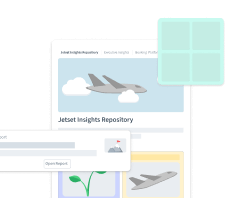
How to Recruit Participants for UX Research (without the Headache)
Oftentimes recruitment is a UX researcher’s least favorite job, and for a good reason. So much can go wrong during the recruitment process, including:
Choosing the wrong tools or channels for recruitment.
Burning out valuable participants with repeated outreach.
Struggling to reach niche audiences.
Sucking time and energy away from more strategic work.
Letting communication fall through the cracks during long-term studies.
Failing (or forgetting) to distribute incentives.
But of course, recruitment matters - a lot. So how you source, manage and follow up with your participant pool can make a material difference in the impact of your research study.
Here are 7 considerations for making the recruitment process as painless as possible.
- 7 considerations for a painless recruitment process
- #1 What are your research goals and methods?
- #2 Who do you need to recruit?
- #3 How many participants do you need?
- #4 What incentives will you offer?
- #5 Where will you find participants?
- #6 How will you screen and approve participants?
- #7 How will you prevent no-shows?
- You shouldn’t have to dread recruitment
#1 What are your research goals and methods?
Before you dive into recruitment, you need to nail down your research goals and methods.
We know, we know, you’re eager to start researching. But don’t rush through the planning phase - your learning goals and the methods you choose will dictate which types of participant audiences you recruit. For example, suppose your goal involves learning more about an existing product. In that case, you’ll probably want to recruit from an internal audience of your own customers—but if your goal is to learn more about a prototype, an external audience will probably be more effective.
Likewise, if your chosen method is 1-1 user interviews, you’ll want to find participants who are comfortable and able to speak freely with you. On the other hand, if your method is usability testing, you’ll need to find participants with access to the tools you’re using to perform the test—or those close enough to travel to an in-person test.
All of this should be decided upon and documented in your UX research plan.
#2 Who do you need to recruit?
During the user research plan, it’s time to define the exact audience you’re looking to recruit.
Make a plan for:
Whether you’ll recruit your customers, a representative audience, or both: Again, this depends on your learning goals and the type of study you’re conducting. In general, customer (or B2B) audiences are preferable for existing products or planned changes that would impact the current customer experience, while external audiences can provide more insight in discovery research or prototype testing.
The targeting criteria you’ll look for: Define audience characteristics like psychographics, behaviors, demographics, and geographics, where applicable. Depending on the specifics of your study, some of these factors won’t matter; for example, geography might be flexible in remote studies.
The audiences you aren’t looking for, too: Certain criteria might disqualify people, like if they’ve already participated in previous studies with you. Be sure to outline this information in your recruitment plan to avoid accidentally contacting the wrong people or over-contacting people who’ve already participated.
For example, your recruitment profile for an online study about the impact of remote work on mental health and wellness in the U.S. might look like this:
Professionals
Based in North America
With access to Zoom
Who’ve worked in both remote and in-office settings
#3 How many participants do you need?
Getting your sample size right is key to an efficient, impactful study. Too many participants will create an unwieldy management process and expensive incentive payouts, and too few will mean inconclusive insights.
I wish there were an exact recommendation to give for the right number of participants, but it really depends on the type of research and methods you’re using.
As a general rule, though, here’s a breakdown of the most common sample sizes for different types of studies:
Interviews – 3 to 10 participants
Focus groups – 5 to 10 participants per group
Diary studies – 10 to 15 participants
Card sorting – at least 15 users per group
Quantitative studies – at least 20 participants
Surveys – at least 100 participants
To decide on the right sample size for you - the minimum needed to have confidence in your results - consider the project's potential impact, the stage in the product development cycle, and the overall complexity of the study.
#4 What incentives will you offer?
Incentives are a way of thanking participants for their time, reducing no-shows, and of course, getting people in the door in the first place.
The type and amount (if monetary) of incentive you offer depends on a number of factors, including:
The length and complexity of the study
How niche the audience is
Whether participants are consumers or professionals
Whether the study is moderated or unmoderated
If you’re unsure what the right incentive would be for your study, try User Interviews’s Incentive Calculator for a personalized, data-backed recommendation.
Of course, if you’re offering monetary incentives, you run the risk of attracting ‘professional testers’, who are only interested in collecting the incentive. These types of participants can dilute the results of your study, which is why it’s essential to pay attention to where you source participants (see #5) and how you screen them (see #6).
#5 Where will you find participants?
When it comes to inviting people to join your UX research participant panel, there are a number of different avenues you can take:
Recruiting tools like User Interviews give you access to widespread panels of vetted participants. Depending on the solution you choose, they may also offer tools for things like managing incentives, conducting remote research, or scheduling sessions.
An internal panel, made up of your own customers, is an effective way of sourcing exactly the type of participants you need for your study. However, we’d still recommend using a purpose-built participant management tool (instead of spreadsheets or your standard work email) for juggling the many lines of communication that this can involve.
Craigslist or social media are easy to access and free to use for the scrappiest of researchers. But, they also come with a higher risk of no-shows and fraud, so use them with caution.
Research recruiting agencies will manage the entire recruitment process for you but are typically very expensive. They’re a good option for someone with a big budget looking for totally hands-off recruitment experience. If you’re not sure whether agency or in-house recruitment is the way to go, check out this guide to help you decide.
Whether you choose one or multiple channels for sourcing participants, it’s always a good idea to revisit your ideal participant profile to decide which channel is right for your study.
#6 How will you screen and approve participants?
When you finally publish your call for participants, you’ll likely get a number of applicants who aren’t quite what you were looking for.
That’s what screener surveys are for. Screeners help you filter out unqualified participants before committing to the full study.
Although screener surveys might sound simple, they’re not as straightforward as most people assume them to be. You’ll need to be careful not to ask leading questions or reveal the purpose of your research study while still ensuring the questions are easy to understand.
Some quick tips for writing effective screener surveys include:
Focus your screener on behaviors and psychographics over demographics unless demographic targeting is 100% necessary for your study.
Write precise, concise, and carefully-worded questions that leave no room for misinterpretation and aren’t leading or revealing.
Ask the most important questions first to eliminate unqualified people early.
Additionally, it’s important at this stage to manage participants’ expectations. Make sure participants know that the survey is a prerequisite to the actual study and that they won’t be paid unless they complete the full study.
#7 How will you prevent no-shows?
What’s more frustrating than showing up for a confirmed session, only to wait for 5 minutes, 15 minutes, maybe a half hour before realizing the participant isn’t going to show—and didn’t send a note to cancel or reschedule?
No-shows are a disappointment and a waste of your limited time, so it’s best to avoid them entirely. Before you start recruiting, you should have a plan for preventing no-shows, including:
Tools: Consider using a dedicated scheduling tool to coordinate sessions. Popular scheduling tools include Calendly and User Interviews, a recruitment platform with built-in scheduling and participant communication features.
Communication: After participants have approved their session time, send confirmation emails with the time and date, location, research topic, and other important information, such as any tools or documents they need to bring with them to the session.
Follow-up: Set a reminder cadence based on the timeline of your study. If you’ve scheduled a session or sessions far into the future, you might want to send multiple reminders the week before and the day of to prevent participants from forgetting or double-booking the time. To make things easier, User Interviews allows you to send triggered or one-time messages and reminders right from the platform.
According to Nielsen Norman Group, the average no-show rate for usability studies is 11%, so you might also consider recruiting a few extra participants, just in case.
You shouldn’t have to dread recruitment
Recruiting the right participants sets the foundation for a successful study. But recruitment shouldn't be a harrowing experience.
Along with the 7 considerations above, you can use a combination of dedicated tools to support you along the way. User Interviews and Condens can help you make the recruitment and management process as painless as possible.
→ User Interviews is the fastest and easiest way to recruit participants for research. Get insights from any niche within our pool of over 1 million participants through Recruit or build and manage your own panel with Research Hub. Our tools make your sourcing, screening, scheduling, messaging, incentive payouts, and all aspects of research recruiting simpler. User Interviews is free to start and affordable to scale as your research needs grow.
→ And, of course, once you've recruited participants for your study, you need a way to store and reference participant metadata and insights effectively. That's where Condens comes in. Condens enables you to come from raw data to findings, manage your project's insights and even upload participant data via the participant pool tool, making it easier than ever to attribute insights to the users they came from. You can directly bring participant data from User Interviews to Condens.







